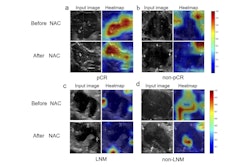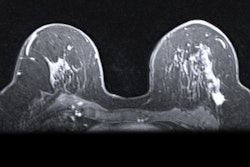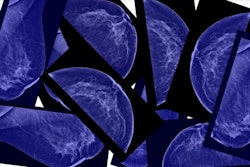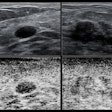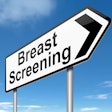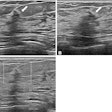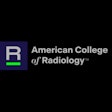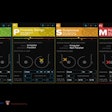An ultrasound-first approach to imaging noncalcified lesions from recalled digital breast tomosynthesis (DBT) can be cost-effective, according to research published in the American Journal of Roentgenology.
A team led by Jessica Porembka, MD, from the University of Texas Southwestern Medical Center in Austin found that using ultrasound first in this setting, with or without diagnostic mammography, is more cost-effective compared to a traditional strategy of diagnostic mammography first, and does not compromise care.
“This underscores the importance of regularly conducting such analyses to inform and refine diagnostic guidelines, and even change clinical practices by ensuring they’re both economically and clinically sound,” Porembka told AuntMinnie.com.
Previous studies suggest that ultrasound is sufficient for diagnostic evaluation of many noncalcified lesions recalled from screening DBT. The researchers noted that in some scenarios, omitting diagnostic mammography can save on healthcare costs. Porembka added that while DBT’s use continues to grow, ultrasound’s role in diagnostic breast imaging has not been thoroughly evaluated in terms of cost-effectiveness.
Porembka and colleagues studied the potential cost-effectiveness of an ultrasound-first strategy compared to a diagnostic mammography-first approach for evaluating noncalcified lesions recalled from screening DBT. They employed a decision tree analysis that used probabilities and prevalence information from published single-institution prospective data, additional literature-derived estimates of diagnostic test performance, and Medicare allowable reimbursement rates.
To measure cost-effectiveness, the group tracked quality-adjusted life years (QALY), incremental cost-effectiveness ratios (ICER), and incremental net monetary benefit. It also used a willingness-to-pay (WTP) threshold of $100,000 per QALY gained.
The researchers found that in a base-case scenario, the ultrasound-first approach led to more cost savings and resulted in slightly higher QALYs over a 40-year time frame.
| Cost-effectiveness comparison between ultrasound-first, mammography-first approaches | ||
|---|---|---|
| Measure | Mammography first | Ultrasound first |
| Cost | $18,323 | $17,672 |
| QALYs | 23.1306 | 23.1309 |
Additionally, the ultrasound-first approach led to an ICER of +2,170,2000 and an incremental net monetary benefit of $681, making it the more cost-effective strategy at the willingness-to-pay threshold.
The researchers also found that on deterministic sensitivity analyses, the most important driver of cost-effectiveness was the lost utility from delayed diagnosis, followed by relative sensitivities of ultrasound and diagnostic mammography. On probabilistic sensitivity analysis, ultrasound first was the better strategy in 93% of iterations, they added.
Study co-author Bersu Ozcan, MD, also from the medical center, said that while ultrasound-first strategies may be more cost-effective, there are scenarios where mammography-first strategies may be more appropriate.
“Although ultrasound is highly effective for certain types of lesions such as masses, it may be less effective in fully assessing architectural distortions or asymmetries,” Ozcan told AuntMinnie.com. “In addition, there may be potential for delayed diagnosis in some cases, particularly if a finding is not seen on ultrasound and follow-up diagnostic mammography is not used.”
Still, the authors hope that this research will have a positive and practical impact on clinical practices. They are seeking future research opportunities to apply ultrasound-first approaches to larger cohorts to make this strategy more generalizable.
The full study can be found here.





